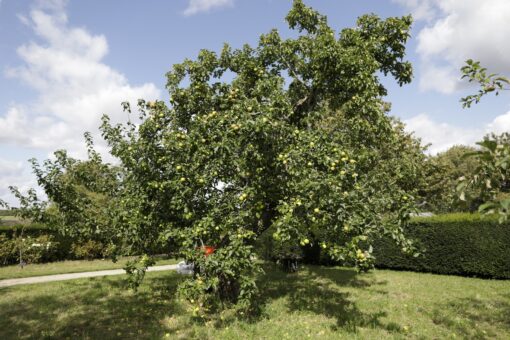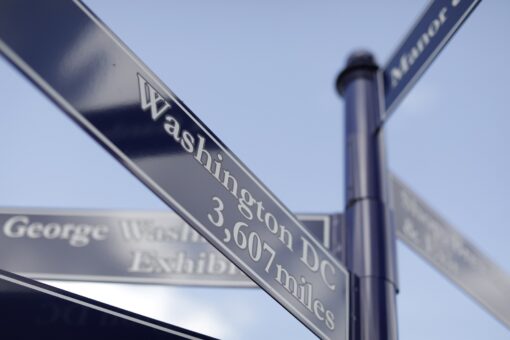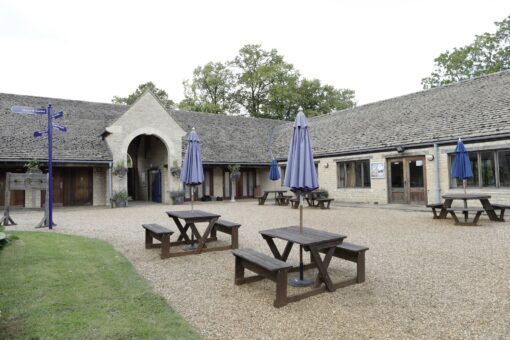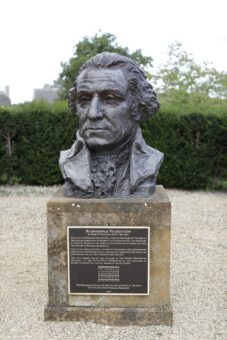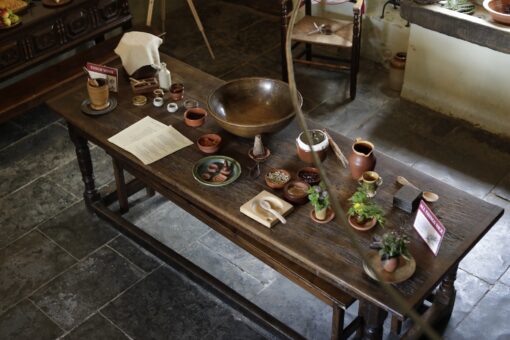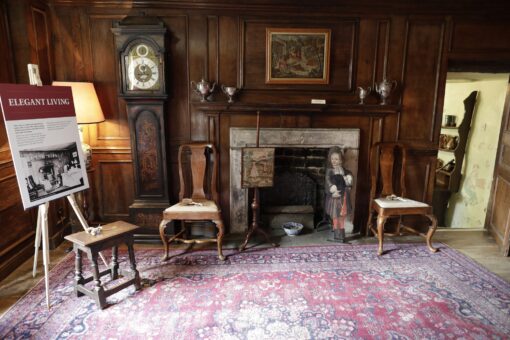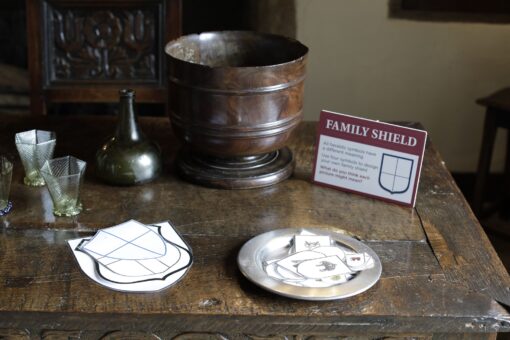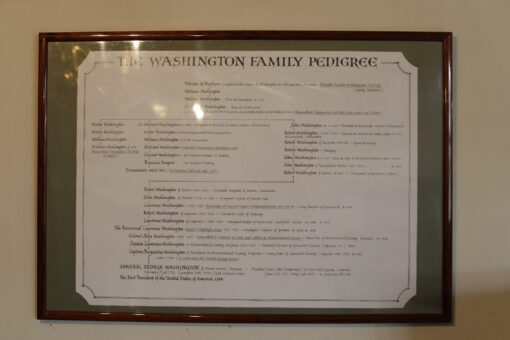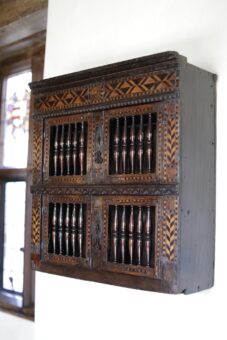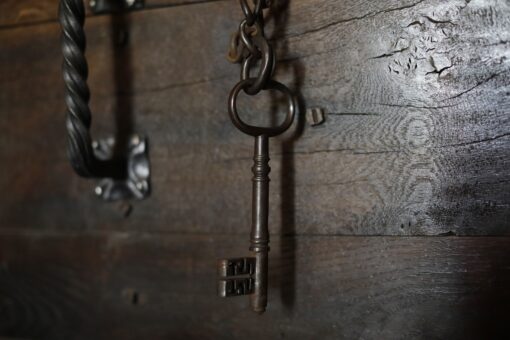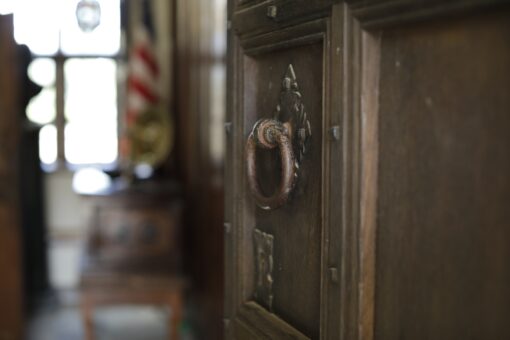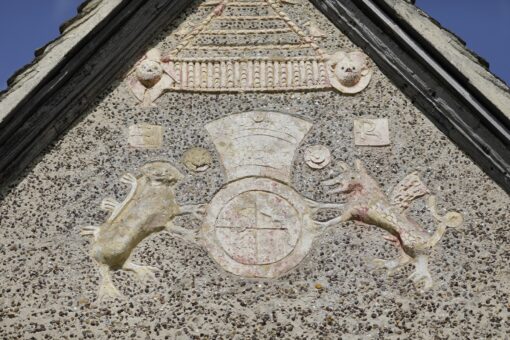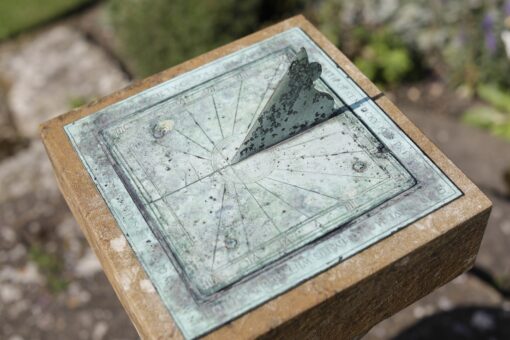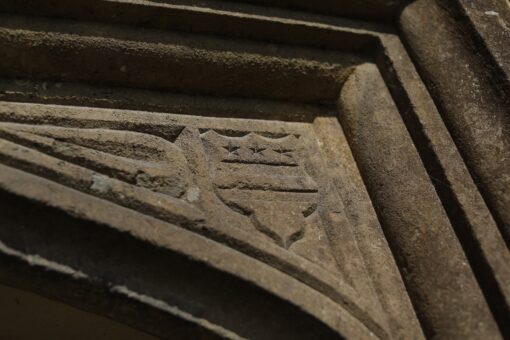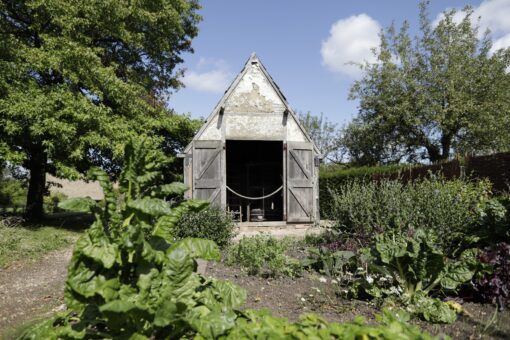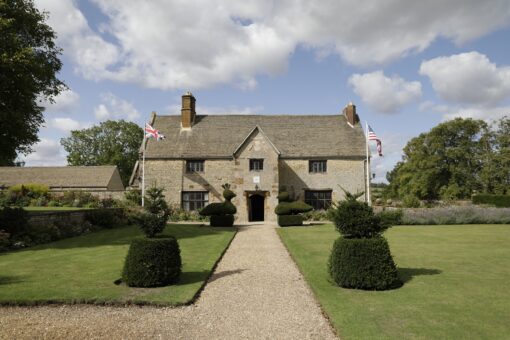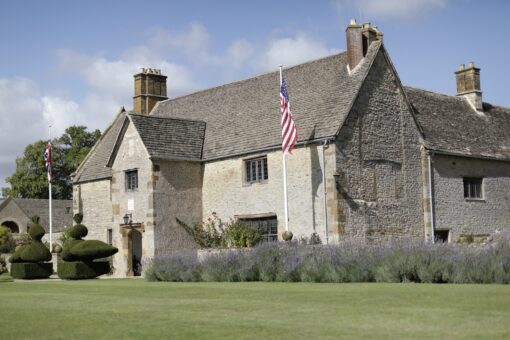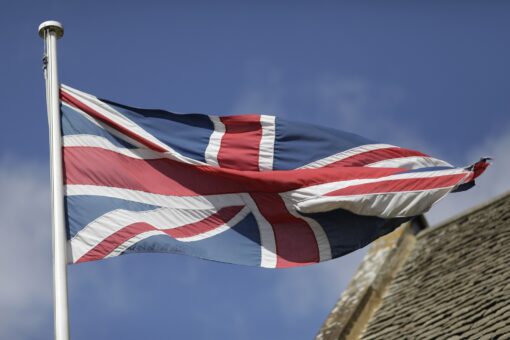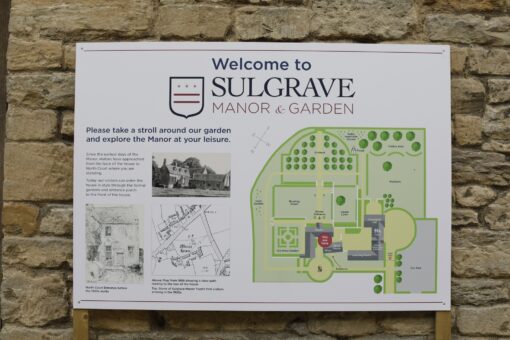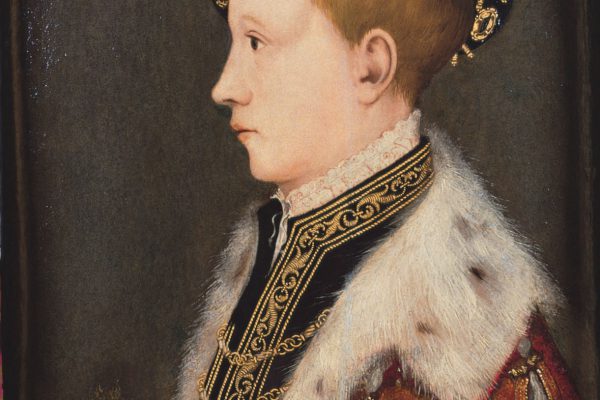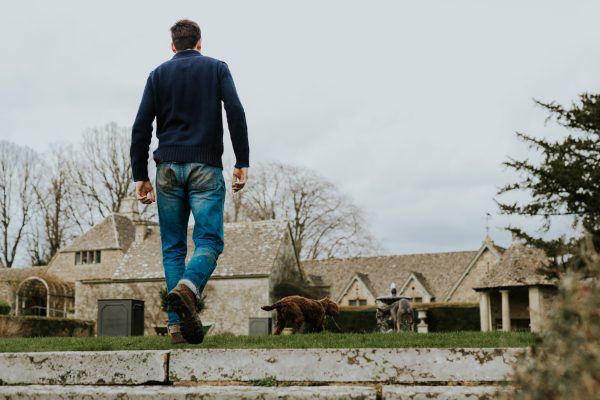Founding forefathers: The Story of Sulgrave Manor
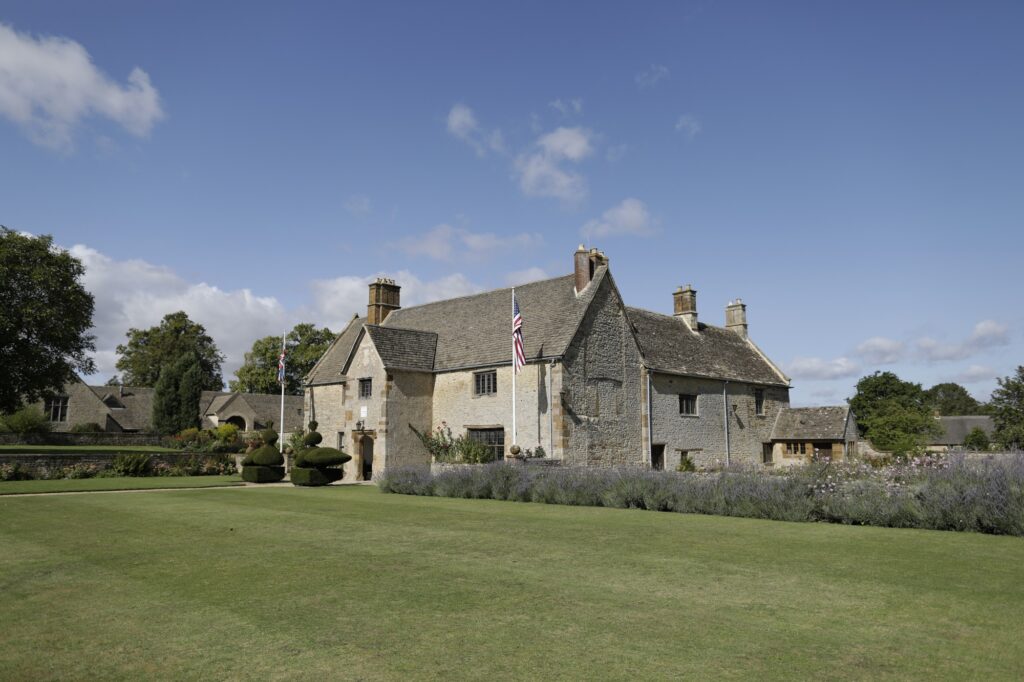
Writing for Historic House magazine, Dominic Head visited Sulgrave Manor in Northamptonshire to hear about the history of this Tudor house and its connections to the famous Washington family.
Sulgrave Manor in Northamptonshire was once home to George Washington’s ancestors. With the 400th anniversary of the sailing of the Mayflower prompting renewed interest in America’s English roots, Dominic Head took a pilgrimage to this shrine of First-Family history.
Since a visit to Sulgrave is all about the predecessors of the USA’s first President, my guide Jo Cowley, Operations Manager, starts me at the beginning – or as near to it as we can get.
In the twelfth century a minor noble called William de Hertburn took the tenancy of the manor of Wessynton, between Sunderland and Gateshead, from the Bishop of Durham. Adopting the name of his new holding, which eventually evolved to its modern spelling of Washington, he built a handsome family home that is now in the hands of the National Trust – the only other ancestral Washington seat open to the public on this side of the Atlantic.
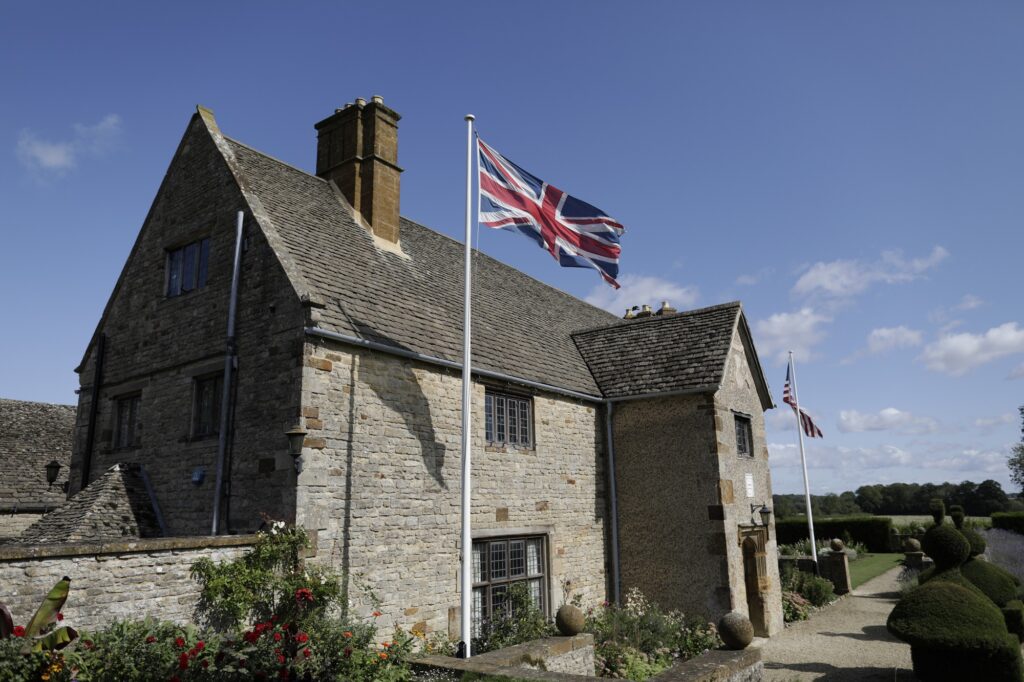
By the sixteenth century a branch of the family had moved across the Pennines to Lancashire. It was from here that Lawrence Washington, a seemingly well-connected member of the gentry, made an advantageous marriage and became a wool dealer in Northamptonshire. He became Mayor of Northampton in 1532, bought land at Sulgrave from the Crown, and built the handsome manor house I’m visiting today.
Yet in little over a century the money, lands and house that Lawrence had accumulated were gone, lost to the religious conflicts and political turbulence of the seventeenth century. His great-grandson, also Lawrence, was a High-Church clergyman, a favourite of the ill-fated Archbishop Laud, and the scourge of puritans at Oxford, where he was made proctor with instructions to root out non-conformist influence at the university.
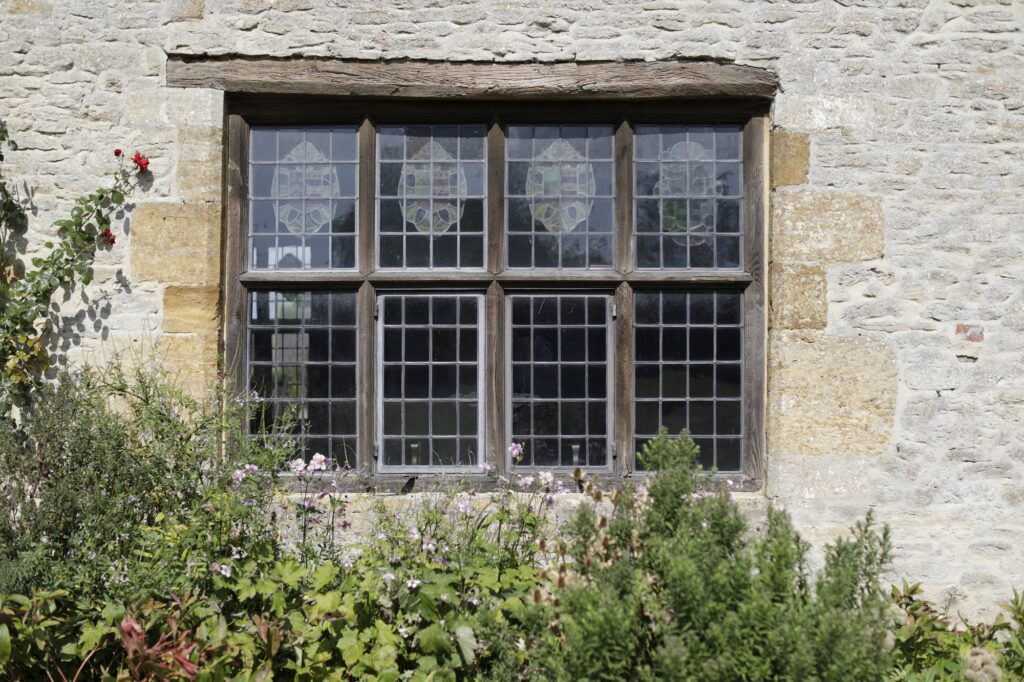
During the Civil War, his victims took their revenge; he in his turn was turfed out of his living, by Parliamentarian forces. Forced to sell Sulgrave, took a lowly vicar’s post at Little Braxted in Essex and his wife and children went to her family home in near Tring in Hertfordshire. Three of his sons eventually decided to make a new life for themselves in the colonies.
While its former occupants flourished in the New World, the house itself entered a period of decline. At first, occupied by a family called the Hodges, it remained at the heart of a substantial estate, even being enlarged around 1700. But towards the end of the eighteenth century the good times must have been over. An entire Tudor wing was demolished in about 1780 and by the mid-nineteenth century at the latest the building was home to a succession of tenant farmers. Much reduced in size and social status, behind a white picket fence, it looked nothing more than a modest farmhouse.
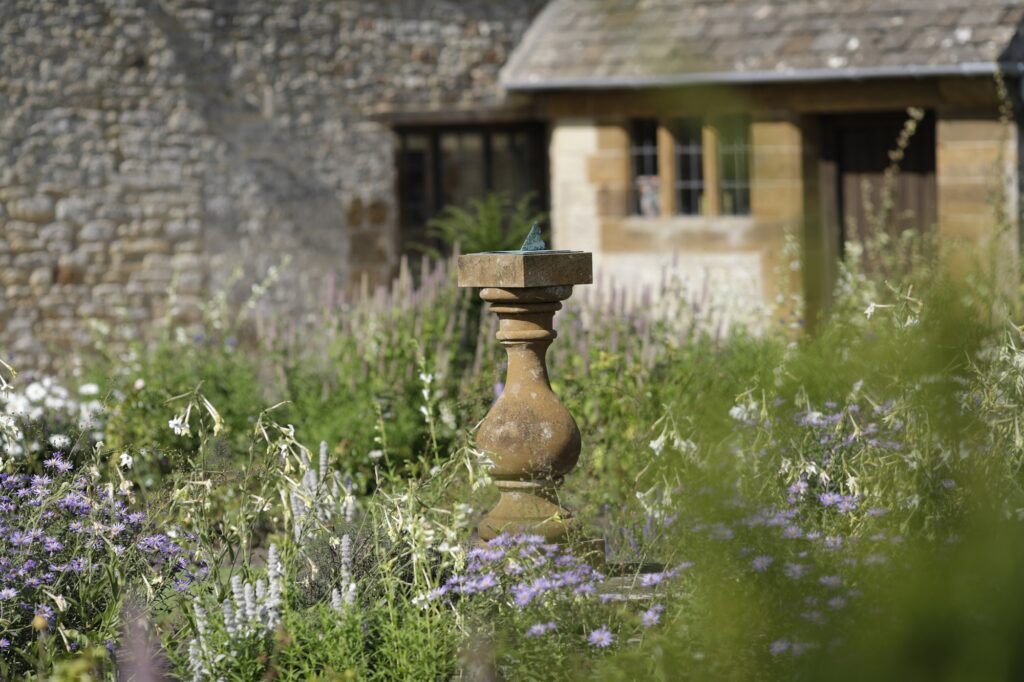
The building’s renaissance began with a public subscription to create a monument to mark a century of peace between the United Kingdom and the United States after the conclusion of the War of 1812 (which ended in 1814 with the Treaty of Ghent).
The committee in charge identified Sulgrave as the right place to represent trans-Atlantic friendship. In 1914 they bought the property with money raised from both Britain and America and commissioned the prolific country-house architect Sir Reginald Blomfield to restore the dilapidated house. The outbreak of another war that same year, putting the entire project on hold, was an unforeseeable irony – though the USA’s eventual entry into the war on the Allied side added a contemporary relevance to the commemoration of Anglo-American amity.
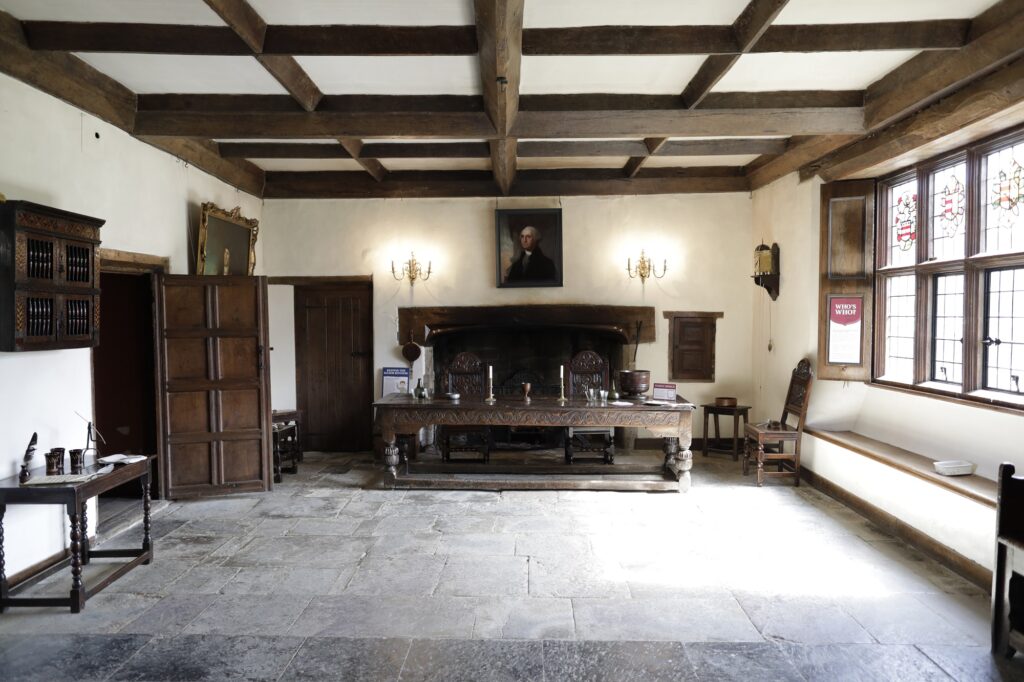
Blomfield returned to work in the 1920s. In 1921, the year it opened to the public, the house’s symmetry was restored with the reconstruction of the demolished west wing. Comprehensive renovation of what was still, in Jo’s words, ‘basically a shell when it was bought,’ followed.
Although modest by the standards of some other British stately homes, the manor captured the imagination of American philanthropic and preservation groups from the start. The Daughters of the Revolution, whose members must be able to prove descent from those who fought on the rebel side in the War of Independence, and the National Society of the Dames of America, whose family trees go back to the earliest settlers, are two such donor organisations, involved since the genesis of the fundraising campaign and still giving today. The Dames own and protect a collection of historic colonial buildings in the US in their own right, but Sulgrave is the only overseas property they support; they’ve also helped to furnish it. An enormous portrait of George Washington was the first item to arrive, before there was even anywhere to hang it.
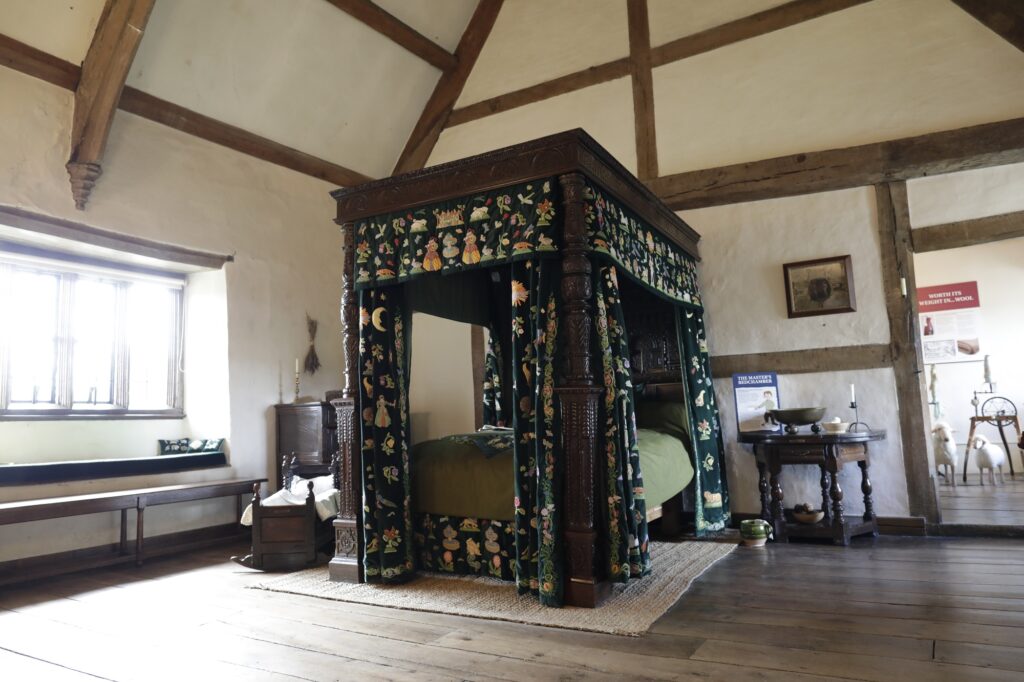
All this may seem a little odd, given that George Washington neither lived here, nor ever even visited. Jo tells me that British and American visitors tend to react differently to the building’s split personality – an interior presented as a sixteenth-century English country gentleman’s house, but exhibits and eighteenth-century contents telling the story of America’s first President. The US visitors – more than half the attraction’s total – ‘get it,’ she says. ‘Ancestry is a big thing in America and being able to trace your roots to Washington is a big deal.’ For British audiences to whom the President holds less of an aura, there is plenty of sixteenth-century interpretation (much of it recently overhauled, much to the pride of the staff), including workshops for kids about everyday life in Tudor England, taking in the herb garden and kitchen, dressing up, model sheep, and even displays about Elizabethan explorers.
For both groups, there is a growing emphasis on the members of the Washington family who did live here. Puzzled by the ubiquity of anchors in the fireplaces, I’m filled in on the life of Lt Col John Washington, son of the Rev Lawrence Washington and the man who most literally spans the British and American halves of the family. After his father’s ruin and the sale of his childhood home at Sulgrave, John was apprenticed to a London merchant through family connections. On a tobacco-trading voyage to Virginia in 1657 the ship on which he was an officer ran aground in the Potomac. The enforced stay while the vessel was repaired perhaps provided him with the time he needed to convince Anne Pope, the daughter of a local plantation owner, to marry him. He stayed on in the colony, becoming a major slave owner and planter himself, and commander of the local militia. The rest, as they say, is history.
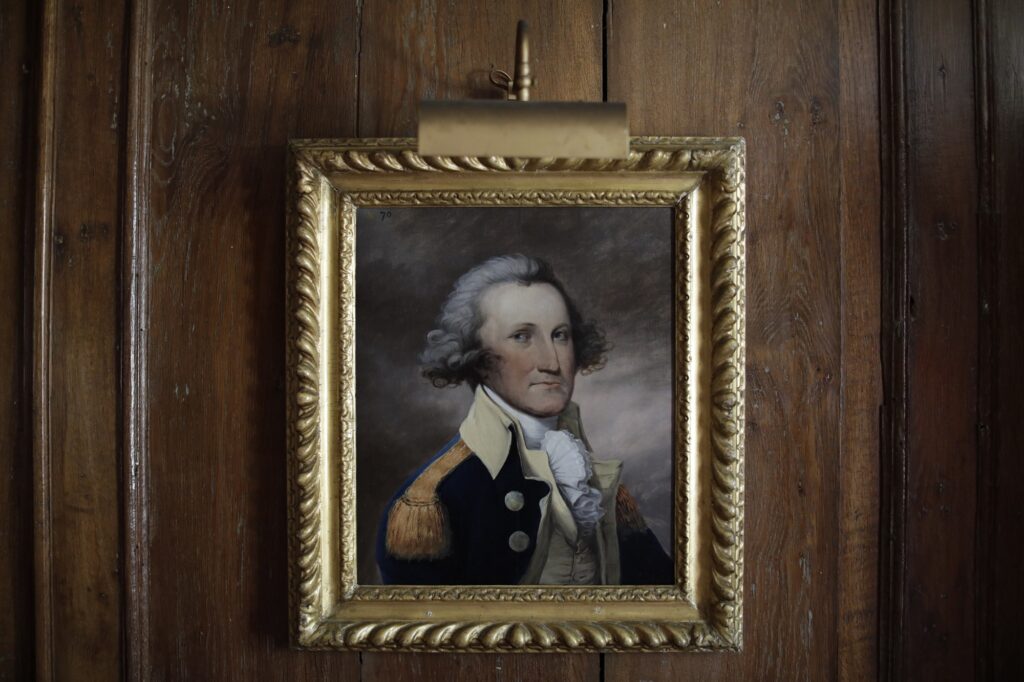
Today the board that cares for Sulgrave faces the sorts of challenges and opportunities that are common to historic house museums. Asset rich (the estate also comprises several of the village’s attractive thatched cottages) but cash poor, the chief concern is to keep the buildings in good repair. A thorough restoration is currently underway. Over the past couple of years, the exterior has been tackled; repairs to the masonry, windows, and roof, new paving and drainage. In the coming year the interior will get an overhaul of its heating, electrics, fire alarms and plaster. Modern synthetic paint, which makes the house damp, will be replaced with breathable limewash.
‘We don’t know where they’re going to put everything while they do it,’ says Jo, ‘but the up-side is that it’ll be a good chance to reassess the layout of the house and how we tell its story. We can get rid of some of our more gimmicky “props”, like in the kitchen, for example, and present a more authentic experience.’
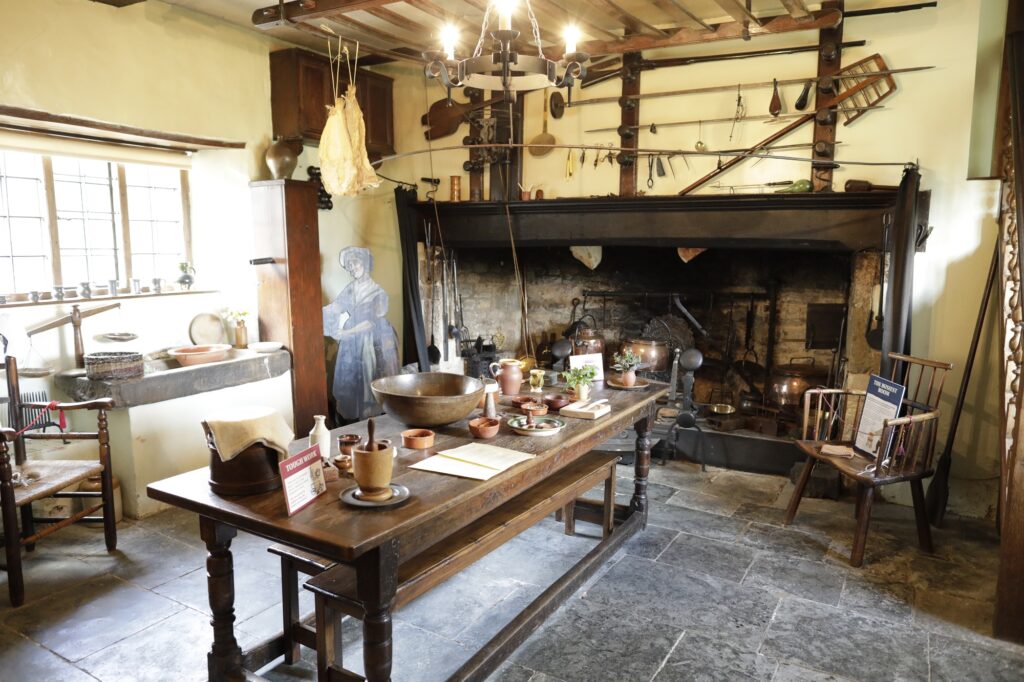
The climax of all this is planned for 2021, the centenary of the manor’s first opening to the public. A major new George Washington exhibition, part-funded by the National Lottery Heritage Fund, will be staged in the current Directors Lodge, built as staff accommodation in the 1920s. The new gallery space, which is not currently open to the public, will not only showcase items from the manor’s important George Washington’s collection, but also tell the story of the purchase and restoration of the building from 1914 to the present. Today Dr Nigel Bowles, the trust’s new chairman and an academic specialising in the history of the US presidency, leads an active and engaged board that even includes descendants of Washington.
The potential for the future is terrific. Land in front of the house, originally conceived as an amphitheatre in Blomfield’s original plans, is currently let for grazing but could in time be brough back in hand and incorporated into the visitor attraction. Darren, the head gardener, certainly has bold ambitions: ‘I’d like to overhaul the herb garden and make a reflecting pool – all dependent on funding, of course.’ Any garden plan will have to take account of one existing resident, though, the ‘Loddington Tree’, allegedly the oldest in Northamptonshire, and already marked on Blomfield’s 1920s plans as ‘ancient’.
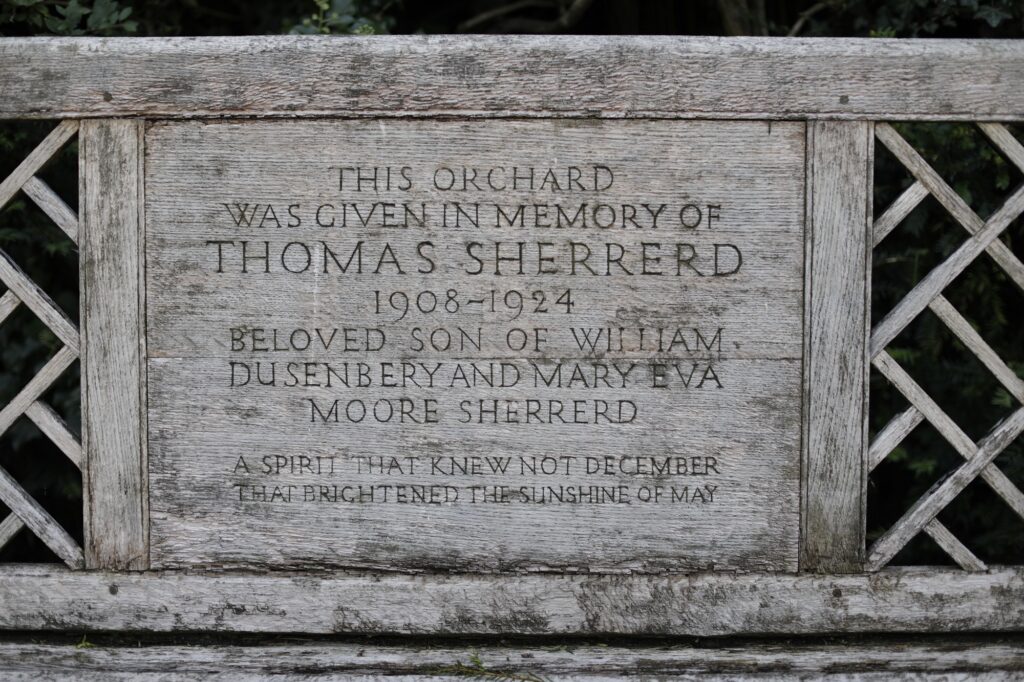
We’re interrupted by Tomasina the cat, fawning around my legs. She belongs to Nikki and her husband, landlords at The Star, the village pub, who are looking to buy the hay that’s just been cut in the manor’s orchard. Tomasina’s a good mouser and has probably come to sniff out lunch, but Sulgrave’s staff usually direct their visitors in the opposite direction, back to the pub, because they don’t have a restaurant on site – though the ‘Brewhouse’ offers tea and cakes. It’s an example of the enduring close links between the house, the Washington family, and the community. The beautiful church contains Lawrence Washington’s memorial, a family pew and heraldic stained glass. Unusually for a village of this size there’s also a post office and a village shop, run by volunteers.
As I head to The Star, accompanied by a curious Tomasin, I ask Jo and Darren if they consider themselves more an ancestral home or museum. ‘It’s a hybrid,’ says Jo, ‘a home, but historic… a historic house! The George Washington objects are displayed in glass cases, like a museum, but we try to make it feel like a home still – cosy and lived in – even if it hasn’t been that way for a long time.’
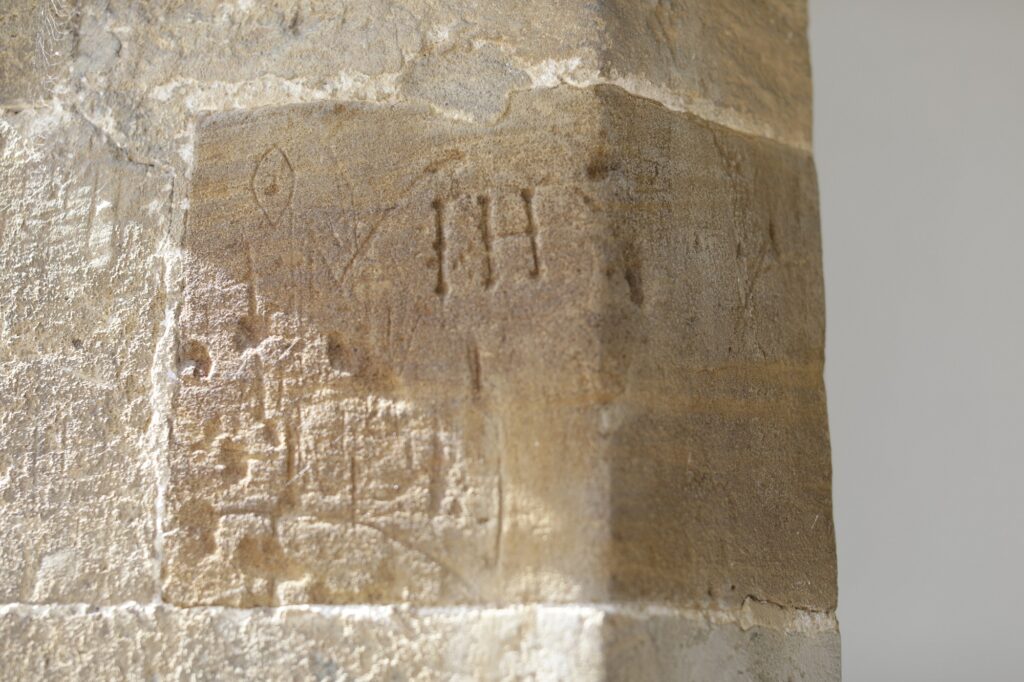
Darren doesn’t think it feels like a museum at all. ‘It’s not a stately home, of course, but if you ask people here where they work, they’ll say a historic house.’
He’s right – it’s not huge but it’s beautiful, it’s important, and it’s ever-changing, under the care of wonderful people who are passionate about it. In every sense, it’s a house for the people… ‘of the United Kingdom and the United States’.
Sulgrave Manor is free to visit as a member of Historic Houses. As a member, you can also read articles like this in our quarterly magazine and enjoy regular online lectures about our member houses.
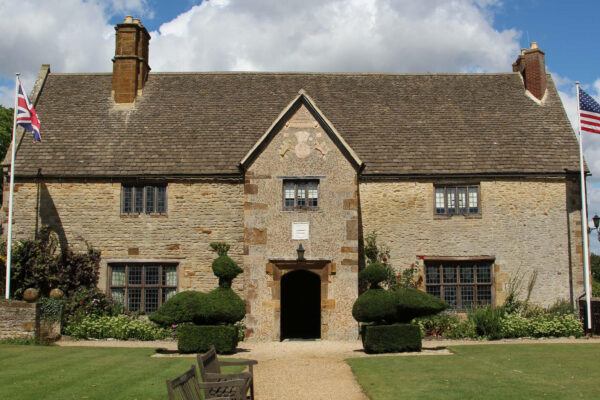
Sulgrave Manor
Manor Road, Sulgrave, Northamptonshire, OX17 2SD

